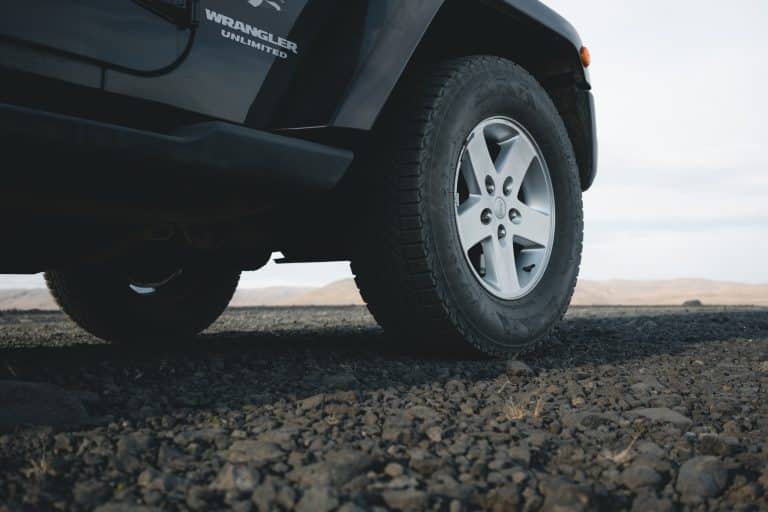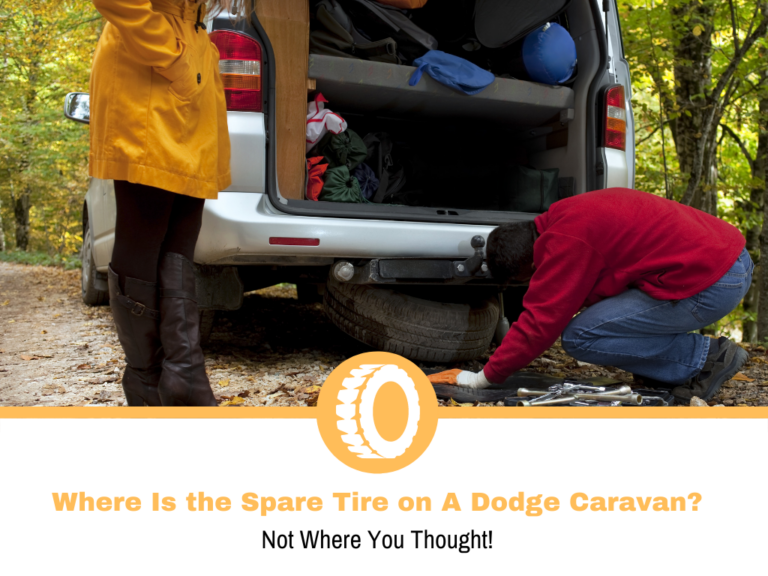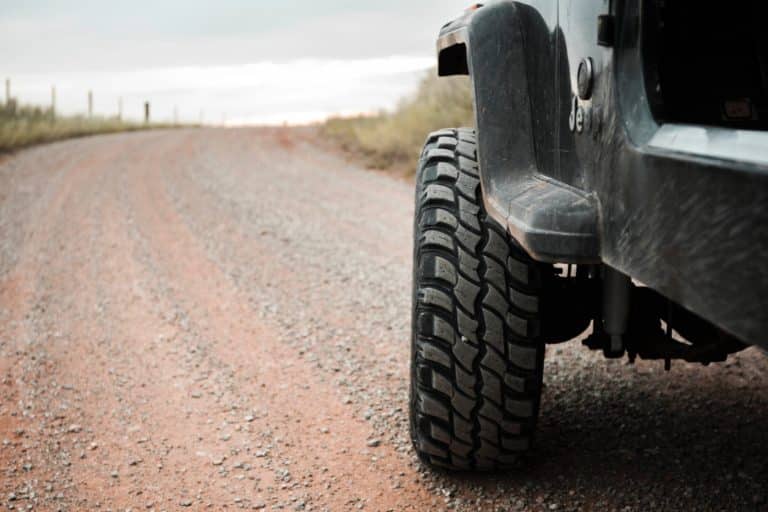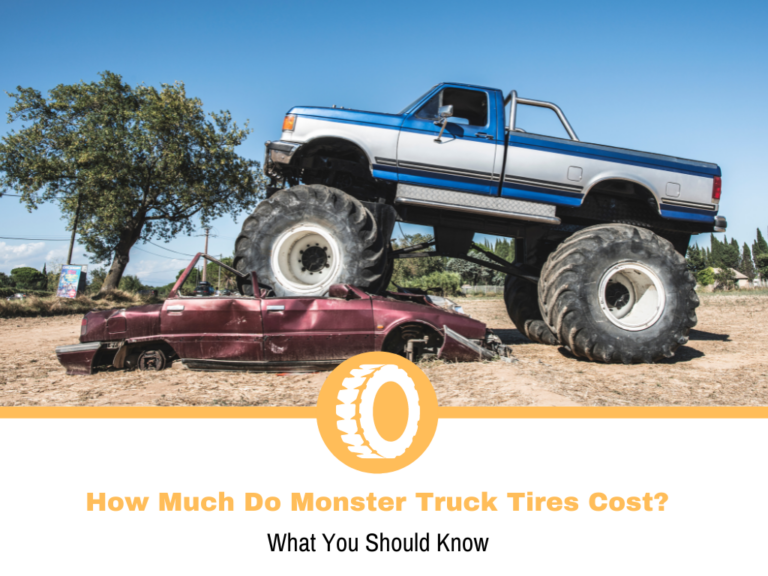Why Do Tires Lose Pressure?
Whenever we talk about tires and their performance, a key element we always mention is the pressure. Regardless of your vehicle, the tire is only a part of the story that keeps it performing optimally. The second part is the pressure.
There is no weight applied to tires when sitting on a shelf. They are light and can hold their weight with no issues. When you put a tire on a wheel, you introduce more weight, so you’ll need something to keep the shape as the manufacturer intended.
The part responsible for that is pressure. It keeps the form as intended based on the car, load, and manufacturer specification. Tires need to be at a certain pressure to ensure proper performance and safety. There is a maximum limit to how much pressure a tire can handle, but it’s significantly higher than what the car manufacturer specifies.
As you may have figured out, tire pressure is essential, so I often recommend checking the pressure regularly. There are multiple reasons why tires lose pressure. Some are to be expected, while others call for a certain action.
If you’re wondering why this happens, stick around. In this guide, I’ll outline the normal and abnormal reasons the pressure in your tires drops and what to do about it.
Why do Tires Lose Pressure?
Pressure loss in tires is a normal occurrence that happens because of permeation. This is the process where the air molecules “escape” through the rubber at a constant rate, thus reducing the pressure. Another normal occurrence here is temperature, something we see when transitioning from summer to colder weather. Colder air is denser, meaning the tire pressure will drop. There are also abnormal reasons why your tires lose pressure, which are related to the tires, valve stems, and rims.
Permeation
Permeation is something every tire in the world experiences. Tires aren’t made from glass, and there are microscopic “holes” in the rubber from where the air molecules can escape. You cannot consider this a flaw in the design because the rubber is crucial for the tire to deliver performance.
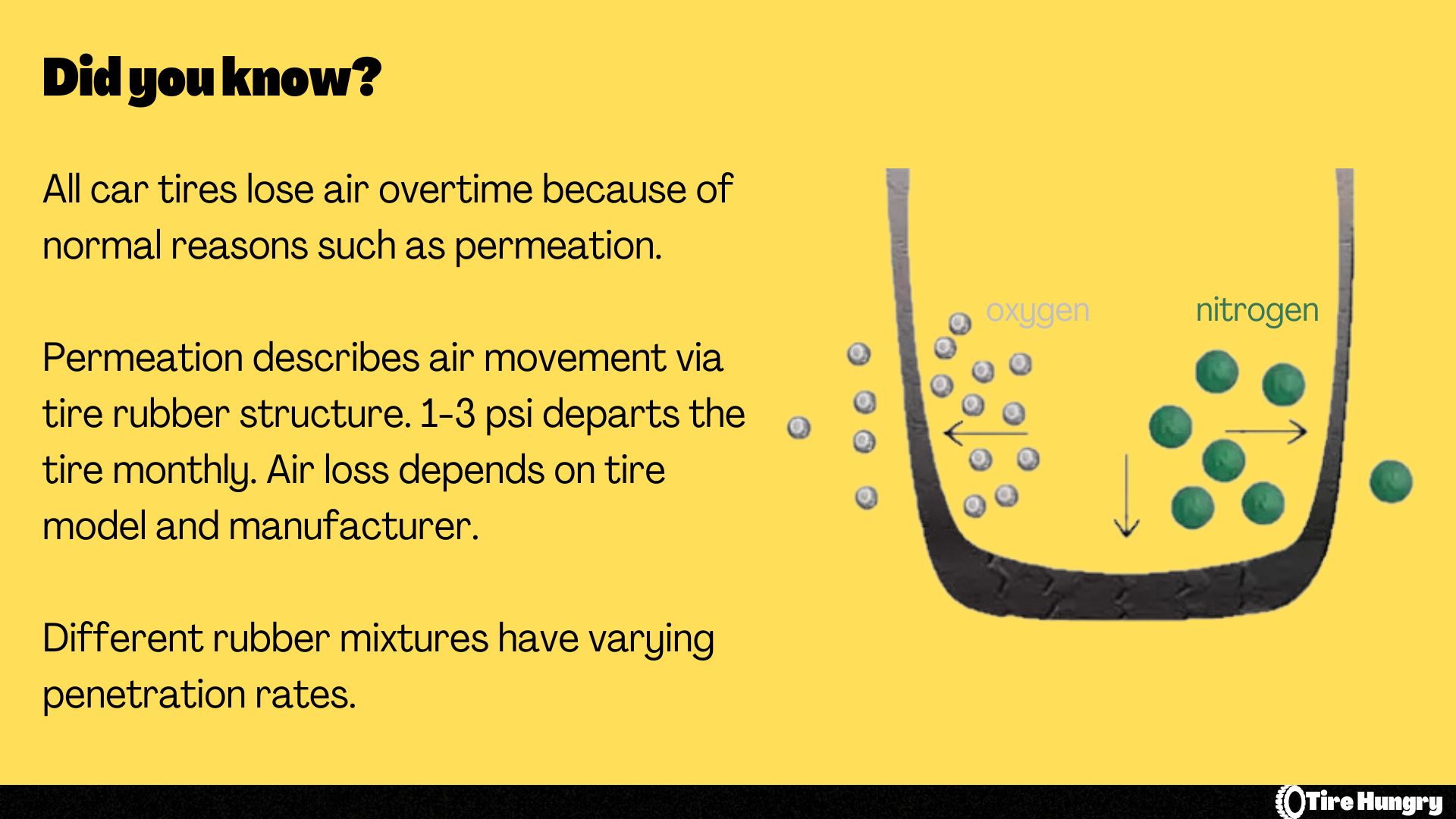
Some tires lose pressure at different rates. Each model of tire will have different concentrations of different elements. Some can lose pressure at a faster, while others at a slower rate.
At the end of the day, it’s a normal process, and you cannot avoid it. You can expect to lose a few PSIs of pressure per month, so give your tires the regular pressure check and top it off as needed.
Recently I made a comparison guide about inflating your tires with nitrogen and compared it with air. One of the advantages nitrogen offers is a reduced deflation rate, so you may want to check out the article and see if that’s a good option.
Temperature
If you’ve been paying attention in physics classes, you’ll know that temperatures make things expand and contract. This varies depending on the material, but there aren’t many things immune to it, and the air isn’t one of them.
Air in colder temperatures is denser, so one of the first mods people make to their cars is a cold air intake. This ensures the engine receives colder and denser air, thus improving the air and fuel ratio. In older cars, you may have gotten a small performance bump, but today, you’re doing it for the intake noises, mostly. The air in the tires goes through the same. In colder temperatures, it shrinks, and with that, the pressure gets reduced.
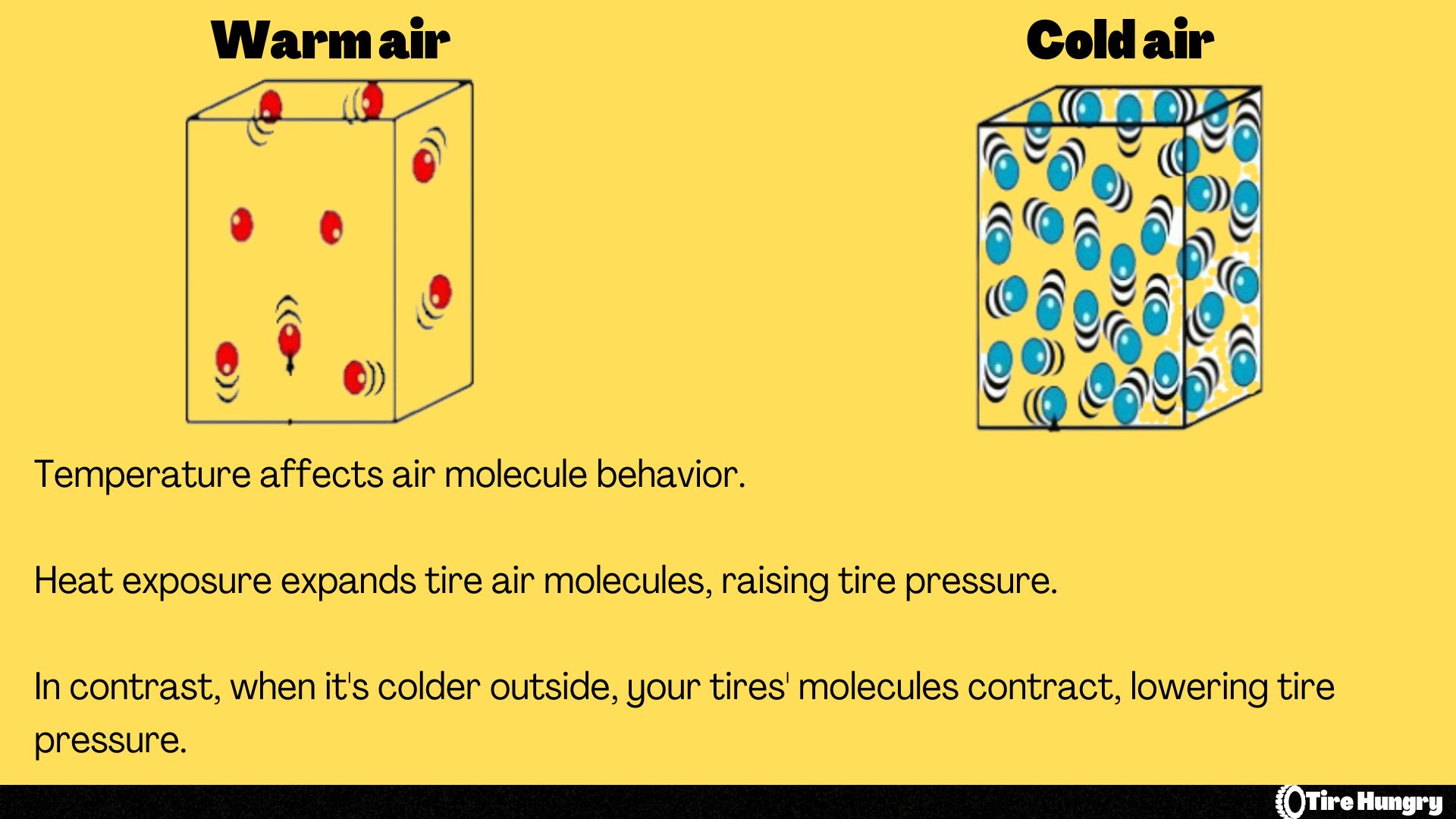
The air in your tires is closed but isn’t isolated from the atmospheric conditions, so it will go through temperature changes. The parts of the year where you’re most likely to see it are the summer to autumn and winter to spring periods. The temperature difference can be 20 or 30 degrees Fahrenheit, so you should expect the pressure to drop slightly.
Most of us consider that 10 degrees Fahrenheit can reduce the pressure by around 2%. So, if we take the temperature difference I mentioned above, you’re looking at a 4-6% drop, which is about 1.5 to 2 PSI on a standard pressure. It’s not a difference that can cause serious safety issues, but it’s good to know where your pressure “escaped” during the night.
Damaged Tire
With the normal pressure loss situations out of the way, let’s talk about the abnormal ones, starting with a damaged tire. This is a common reason why a tire will lose pressure, and there are several situations you’ll need to look at.
The roads we drive on aren’t as clean as a hospital’s floor, so you can expect to have some sharp objects penetrate your tires. Depending on your luck, this can happen too often or never happen at all, but regardless, it’s a reason for losing pressure. A nail, piece of glass, or anything sharp enough to cut a tire can damage it to a point where it can lose pressure. The rate at which it does that will depend on the size of the puncture and its location.
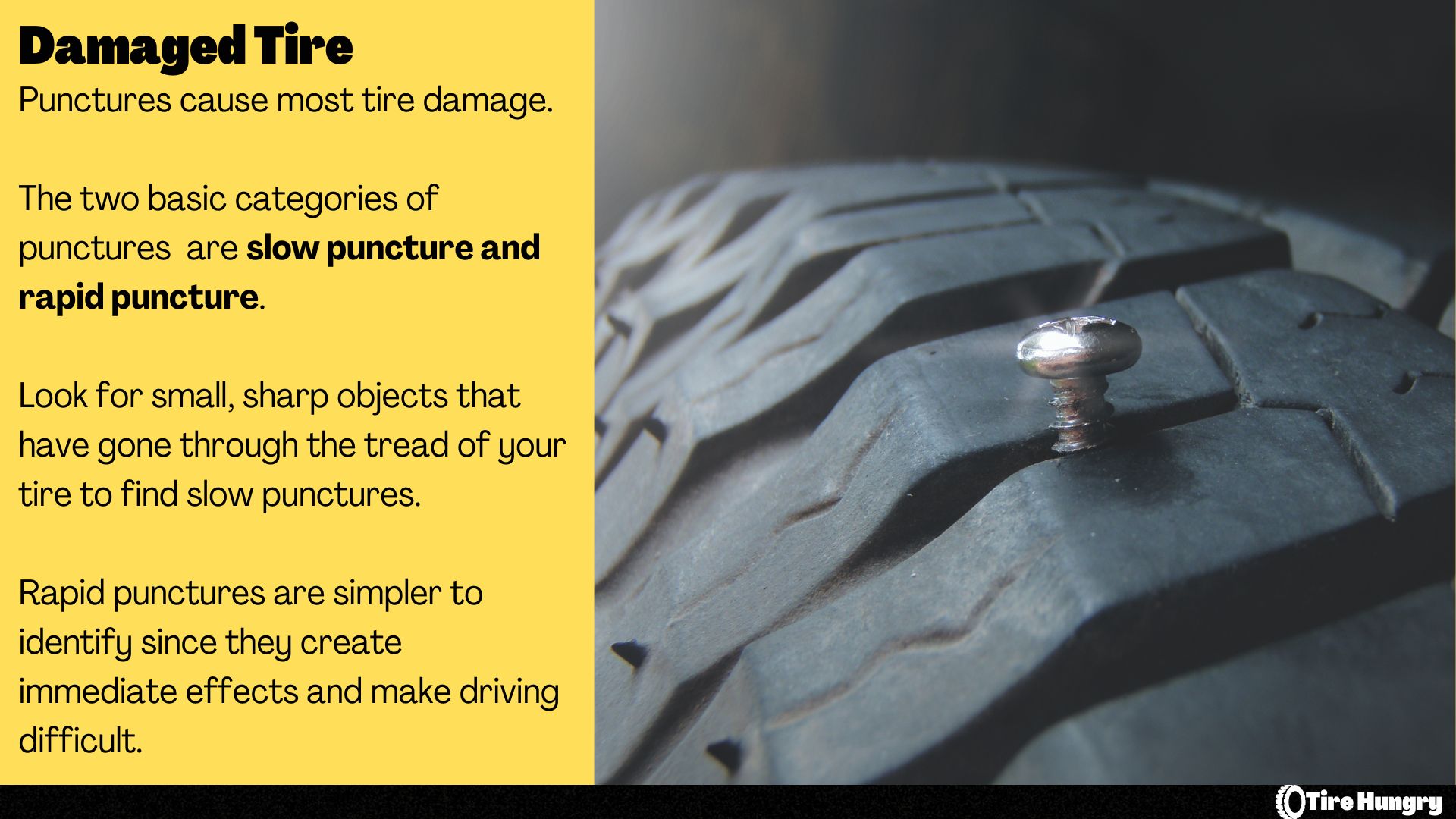
Tires rely on the bead to keep it in place on the rim, so the next reason your tire can lose air is if the bead is damaged. This can happen if the tire is damaged during installation, or a big hit can cause the same. The bead sticks to the rim, and thanks to the pressure, it keeps the tire inflated, as it should. A damaged bead means that the tire won’t seal properly, so you’ll have pressure loss at an increased rate.
Even though the sidewall isn’t the part of the tire that’s contacting the road, it can be why you’re losing pressure. Whenever you’re going over a curb, the tire squashes, and even though it’s not recommended, it’s not too terrible. Doing that at a higher speed can damage the internal construction, and the tire will bulge. At a certain point, the pressure on the inside will become too great for the damaged sidewall to hold, opening up a tear and losing pressure.
Valve Stems
Those little black thingies on the rims are called valve stems, and the primary purpose is to offer a way for you to inflate or deflate your tires, depending on the situation. They let air pass one way at a time, so if you’re inflating the tires, they’ll let the air in. When you’re done inflating and detach the hose, they close off, keeping the air in and the pressure as intended. It’s the same principle for deflating but in reverse.
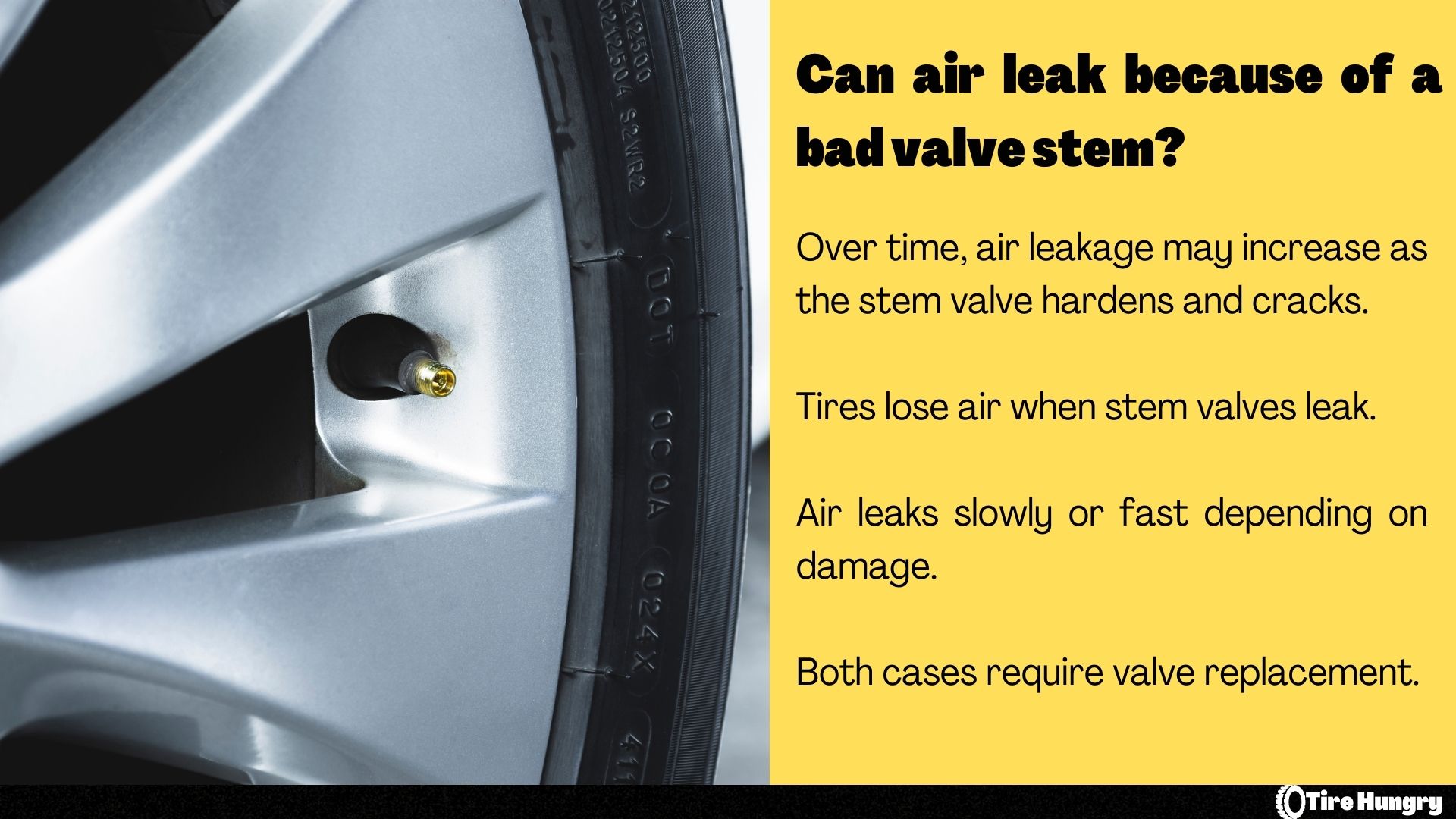
The stems keep the pressure, so a damaged one will cause accelerated pressure loss. The rubber used in the body will become brittle over time. At a certain point, a hairline fracture can appear from where the air will begin to escape.
In some rarer cases, the body of the valve stem can get damaged. This is the part that keeps the air from getting out of the tire, and any damage can result in the air “leaking” out of the tire.
Damaged Rim
The rim is the final cause of abnormal tire pressure loss. By design, rims are supposed to be perfectly round, or at least as close to perfect as possible. This ensures it matches the tire perfectly, so both can make complete contact around the bead and create a seal.
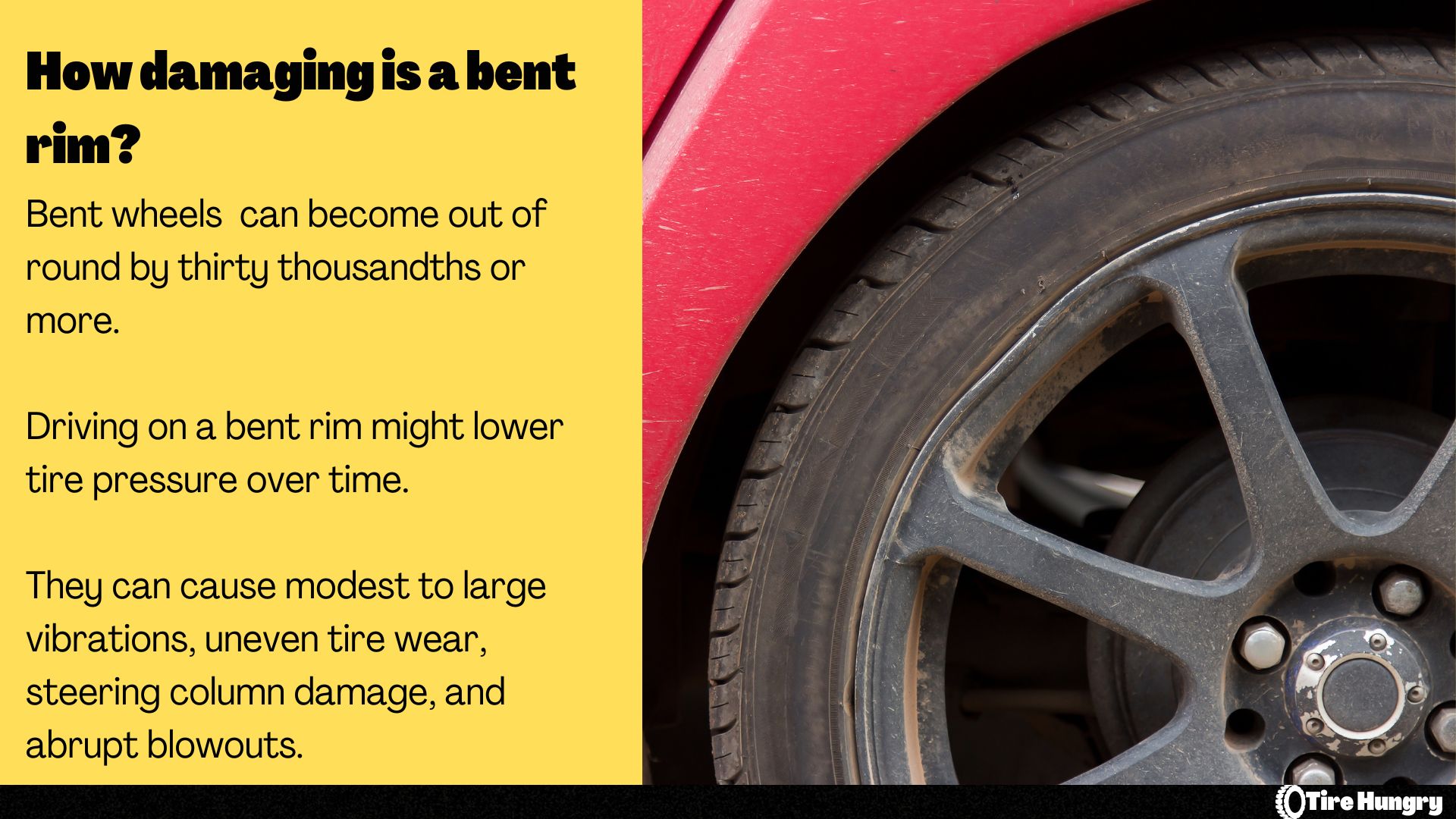
The problem occurs when the wheel isn’t perfectly round, and the most common damage we see is in the lip. This is the part of the tire where the bead lays, and if there’s a bent somewhere on the lip, there won’t be a “perfect” seal.
In rare cases, the entire wheel can be bent. Air can escape from a tire if the rim is out of shape.
How to Tell if Losing Pressure is Normal?
Tires lose pressure, and there’s no denying that. The only difference is if it is normal or not.
In the section where I talked about permeation, I mentioned that a tire should lose around 1 to 3 PSI per month, which should be your baseline. If you’re getting a higher number, you’re having some problems.
As far as temperatures are concerned, this is problematic, and here’s why. No one checks the tire pressure in the morning and evening, so the slight differences between high noon and midnight aren’t something you’ll find unless you really want to. The only way you can find this is if you have TPMS sensors that give an exact readout on your car’s computer.
Some cars have an older type of TMPS sensors, which indicates a problem after a larger amount of pressure is lost. I believe the sensors in my car will start warning me if the pressure is 30% below the optimum. If that’s 35 PSI, the computer will throw a warning sign if the pressure drops below 25 PSI. It’s not a complete flat, but it’s far below the pressure I’d feel comfortable with. This is the main reason I lean more toward regular pressure checks.
If the pressure loss is greater than that, then you have a bigger problem you’ll need to address.
How to Prevent Abnormal Pressure Loss?
I’ll be honest – you can’t, at least not after the fact. If your tires lose pressure more than they should, you have a problem you’ll need to resolve. You can do a few things to help prevent that from happening.
The first one is tire care, something that will keep the pressure loss normal and your tires lasting as long as possible. Avoiding potholes or hitting curbs at higher speeds will ensure that the sidewall doesn’t get damaged. Also, be on the lookout for any debris on the road that can puncture your tires.
There are other things that can get damaged in the same situations. I already explained how a bent rim could be a problem for pressure, and this kind of damage can cause that.
Finally, the stem valves are something you should care for and replace occasionally. In most cases, a tire technician will inspect them when you’re changing or rotating your tires, so you’ll know it’s time to change them. There isn’t a specific rule around this, but I usually change them every several years after a consultation with the tire shop I use.
Conclusion
Tire loss is a “condition” where some car owners panic, thinking they have a problem. Depending on the situation, that may be true.
If the pressure loss is normal, and by normal, I mean a couple of PSI per month, then you’re golden. Keep checking the tire pressure regularly, and you’ll have nothing to worry about. If you see a quicker pressure loss, you are facing an issue. You can identify the problem yourself, but in most cases, you will need to take your car to the tire shop unless you have a tire shop in your home garage.

